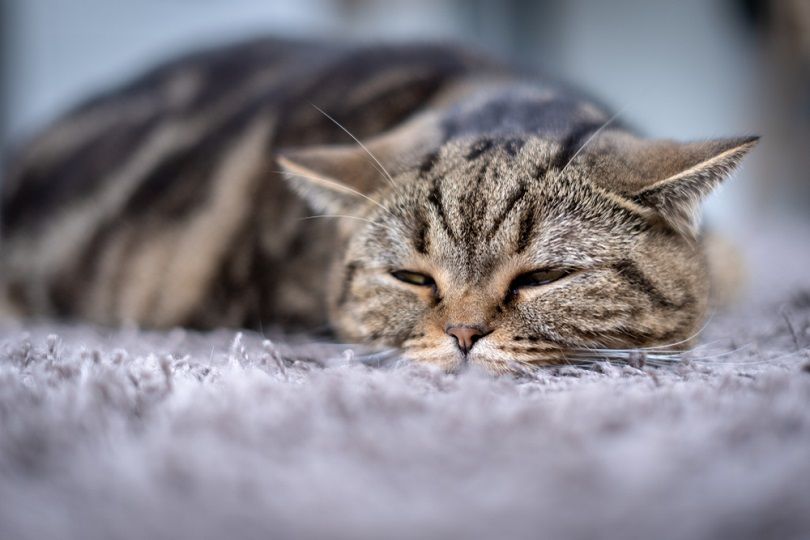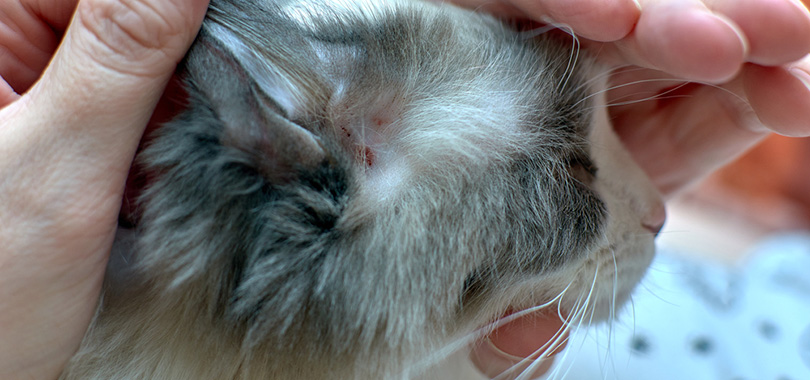Can Cats Eat Flour? Nutritional Facts & Safety Guide

Updated on

Flour is a powder made by grinding raw grains, roots, beans, nuts, or seeds. It is used to make many different foods. As a pet parent, you might be wondering if flour is safe for your cats to eat. If your cat eats a little bit of flour, it usually isn’t an issue. Most types of flour aren’t toxic to cats, but it’s not very healthy for them to eat too much of any kind of flour. So, although it’s safe to eat, flour shouldn’t be fed to cats regularly or given as a treat.
You can find a wide selection of flour and flour alternatives these days. So, this guide is here to provide information on what types of flour are safe and unsafe for cats to eat. Sometimes, cats can have grain allergies, so we’ll also go over what cat owners should do if they suspect that they have food allergies.
Types of Flour

There are many different types of flour available on the market. Generally speaking, though, the three most common types are:
- Cereal Flour – This is the most popular flour around the world. It includes wheat flour, which is the main ingredient for bread, a staple food for many cultures. It consists of either the endosperm, germ, and bran of the wheat plant together (also known as whole-grain flour) or just the endosperm of the plant alone (also known as refined or white flour).
- Corn Flour – Remains a staple in the Americas and is derived from corn.
- Rye Flour – A constituent of bread in Central and Northern Europe
Almost all flours found on the market today are bleached. Bleaching is a process that strips the flour of its natural yellow color and gives it the trademark white color we often associate it with. Because bleaching also strips flour of its nutrition, most flours are enriched after the bleaching process to add back some nutritional value. However, this process doesn’t improve the nutritional profile of flour, it simply restores its nutritional composition.
Can Cats Eat Flour?
In general, flour is safe for cats to eat, and they typically have an easy time digesting it. However, that still doesn’t meant this is something they should eat regularly. Flour is sometimes used in dry cat food (kibbles) as an agent which allows the kibble to hold its shape. However, the nutritional yield of flour is incredibly low. Therefore, the different flour types offer no real nutritional benefits to our feline friends. This is why feeding our cats flour isn’t generally recommended. With that being said, here are some of the popular types of flours commonly found in the market and their safety with regards to our feline friends.
Gluten-Containing Flour

These are very commonly found in stores all over the world
- Wheat flour, includes varieties, such as:
- Common wheat flour
- White flour
- Noodle flour
- Spelt
- Atta flour
- Maida flour
- Plan or all-purpose flour
- Whole wheat flour
- Rye flour
These are not recommended for cats but aren’t toxic for cats either. If your cat eats some, they’ll likely be fine, unless they have a gluten allergy, which we’ll discuss shortly.
Be warned that some of these flours are used to make bread which may contain other ingredients that are very toxic for cats, such as raisin or chocolate bread. Whenever it doubt, do not feed any human food to your cat. Always consult with your veterinarian or a feline nutritionist before offering your cat any food item that isn’t intended for them.
Gluten-Free Flours

Popular gluten-free flours include the following options:
- Almond flour
- Apple flour
- Banana flour
- Brown rice flour
- Buckwheat flour
- Corn flour
- Coconut flour
- Chickpea flour
- Potato flour
- Nut flour
These are slightly trickier to properly analyze, as some are acceptable options for cats, while others are derived from ingredients that cats shouldn’t be fed. None of them are recommended as a regular treat though, so as a good rule of thumb, these should either be avoided or have their ingredients carefully checked before being used for anything your cat may eat.
Warning on Raw Flour and Raw Dough

Keep in mind that cats should never eat raw flour or raw dough. The CDC has cautioned against eating raw flour as it may contain bacteria like E. coli, and needs to be cooked, like other foods.
Raw dough usually contains yeast (a rising agent), which is harmful to cats. Yeast ferments the carbohydrates in dough, which produces both ethanol (a type of alcohol) and carbon dioxide. Therefore, if your cat eats raw dough, they may suffer the effects of alcohol poisoning.
- Appearing disoriented
- Appearing bloated
- Reluctant or unable to move
- Tremors
- Feeling cold to the touch
- Appearing unresponsive
Make sure to contact your veterinarian right away if your cat has eaten any amount of raw dough, as it warrants an emergency visit. Alcohol poisoning can be fatal for cats.
Cats and Grain Allergies
Cats can have grain allergies, but it’s not very common.

If you suspect that your cat has a grain allergy, try to look for the following signs associated with food allergies:
- Constant scratching
- Constant licking
- A dry coat and hair loss
- Gastrointestinal distress
- A loss of appetite
The best way to determine if your cat has a food allergy is to work with your veterinarian. Your veterinarian will typically rule out other medical causes first. If your cat’s suspected ailment is food allergies, a common way to confirm it is to conduct a food elimination trial and food challenge.
In short, a food elimination trial completely removes the suspected allergen from your cat’s diet for several weeks and places your cat a a prescription hypoallergenic diet. The purpose of the trial is to see if a cat still experiences signs of discomfort or shows signs of improvement after the diet modification.
If your cat responds well to a food trial elimination diet, they may be “challenged” after several weeks with an individual ingredient to see if reintroduction of the food item elicits any former signs of discomfort they were experiencing. If the ingredient successfully does so, it can be listed as a food item your cat is allergic to. If your cat doesn’t seem to have a problem with the reintroduction of ingredients they used to eat prior to the elimination trial, they may have other issues that your vet will look into.
Food elimination trials are extremely challenging to perform if you don’t comply with your vet’s instructions for your cat’s diet during the process. Remember that no meaningful diagnosis or confirmation about an allergy can be made if you offer your cat any food (including treats) that aren’t approved by your veterinarian throughout the entire course of the trial. Other options for determining a food allergy might be more appropriate if you wish to obtain confirmation sooner, though they may not be readily available everywhere. You should discuss such alternatives with your veterinarian.
Now that you know what you can safely feed your cat, it’s just as important to find a bowl that supports their health and well-being. With whisker-friendly bowls and a wide tray to catch any spills, our Hepper NomNom Cat Bowl is our favorite option.
Wrapping Up
In general, cats can safely digest cooked flour of most kinds. However, flour isn’t a great source of nutrition for your cat. Therefore, it isn’t something you should actively seek to add to your cat’s diet. Both raw flour and raw dough are dangerous for cats and therefore are never recommended for them in any amount.
Related Reads:
- Can Cats Eat Vanilla? What You Need to Know
- Can Cats Eat Pasta Sauce (Spaghetti Sauce)? What You Need to Know!
Featured Image Credit: Kuznetsov Alexey, Shutterstock













